Please keep the other posts on topic. Use this for talking about whatever you want to talk about.
Month: February 2019
Pakistani Perfidy & The Nehruvian Deep State
As a minority, it is the everyday discrimination that hurts me most
In a campaign led by a few other residents, the Hindu family was refused their basic right of acquiring the property. It was claimed that instructions to prevent Hindus from acquiring apartments had come from an army office located near the building, based on the so-called belief that all Hindus are Indian spies. That claim was later found out to be false.
Personal conversations revealed that the bigoted residents were actually really concerned about the family setting up idols in their home as part of their religious rites. There were some other, more rational residents, who suggested that what the Hindu family did in their home was their private business, but the voices of sanity were silenced.
The article is written by a Pakistani Christian and is couched in the language of engrained fear. No Pakistani minority will dare lash out in the same manner that Indian Muslims do.
I eagerly await Kabir Bhai and his fellow Pakistani liberals to lecture us:
(1.) Pakistan is a Muslim state so that there is absolutely nothing we can do about this.
(2.) India does the same thing with vegetarian colonies.
The Roots of Hindu Rage are very simple. They are seeing their Hindu kin being turned into second-class citizens all over the Muslim world, while the Indian Muslim minority flaunt (and exploit) their privileges in India. Compared to the Muslim minority in Myanmar, China or even Israel; Indian Muslims have it exceptionally easy.
AR Rahman and Adnan Sami were holding court like demi-gods in the Voice yesterday; I cannot think of a single society where Muslims & Islamicate culture hold so much prestige.
If the same thing had happened to India to a Muslim family; the Nehruvians, post-modernists and NGOs would make sure it’s front page news.
Nehru India as the “Deep State”
The Deep State of India is Nehruvian India, which is driven to ensure that the post-Independence constitutional settlement endures. The inane constitutional settlement ensures that India will always be a fractured nation and therefore will need a “Dynasty” to wield power.
Would HinduRashtra split India?
Hindu India would not lead to a fractured India because most of the Hindu states and population are anyway strongly Hindu. The only non-Hindu states (Punjab, some of the seven sisters) would be able to safeguard their own local traditions in the same manner Tamils have done with regards to Hindi; they are not pan-Indian ethnicities. There is only one minority that will screech and battle every step to Hindu Rashtra and that is the Muslim minority. They will never sing Vande Mataram or appease the Hindu majority. Babri Masjid need not have been destroyed; Hindus are not a vengeful people and Ram idols in the building would have turned it into another Balaji site.
What is happening is that Hindu Rage at Muslim behaviour is instead being deflected towards Islamicate culture (and the odd riot) and therefore Allahabad pays the prices for Allah refusing to share the limelight with Hindu deities.
Rahul Gandhi in context with the rest of the global Left
There is nothing miraculous about Rahul Gandhi’s resurgence; it is the same syndrome you see in progressive parties all over the world.
Rahul Gandhi is Jeremy Corbyn, Beto O’Rourke, Justin Trudeau and even Macron. The diverse left needs a straight white male figurehead/kingmaker to hold its coalition together whereas the right can experiment with different leaders (May, Merkel, Modi, Marine Le Pen).
Nehru India as the Brahmin bulwark against a Shudra HinduRashtra
The upper caste urban vote bank of the BJP feel their guilt expiated when they are able to vote for a OBC like Modi; it may be a reason why Advani (a Sindhi Brahmin) never made it as PM. Maybe the Brahmins of the BJP aren’t able to maybe fight tooth and claw or as hard their Shudra counterparts?
It also raises an interesting question that if Hindu India’s best dynasties were actually Shudra (Gupta, Mauryas), then is the Mughal-British-Nehruvian Deep State of India committed to Brahmin rule by the Nehru-Gandhi clan as opposed to Shudra Rule by the BJP?
The Vijaynagar Empire and the saving of the Hindu Majority
It is interesting how Indian history is taught in a very misleading way. Akbar and the Mughals are presented as Indian (which is questionable since their eye-watering opulence, the Peacock Throne apparently cost twice as much as the Taj) but the Vijaynagar Empire is seen as a footnote (there is an important twitter thread on it, which I can’t find).
The Vijaynagar Empire probably did save Hinduism from Islam by keeping South India structurally and absolutely Hindu. It is interesting that Northwest and north east India are majority Muslim (when one includes Pak & Bangladesh into it) but that South India, the other great wing of India, is 90%+ Hindu. There is no reason why South India & the Deccan, relatively far from the Brahmanical and Sanskrit core of UP, should not have had a substantially Muslim contiguous belt like the Punjab and Bengal.
There are different reasons as to why the Punjab and Bengal became Muslim but by the time the Muslim dynasties had infiltrated the South, there was an intellectually and ideologically resilient Hindu population.
I would also hazard that though the Deep State is optically secular-Hindu but structurally Mughal & British.
Part-Partition – the worst of all worlds
It explains why Nehru and Gandhi agreed to a “worst of all worlds” with a part-partition when they should have either gone for No-Partition or a Full Partition.
They could have made false promises to Jinnah, keep India united, wait for Jinnah to die and then set about their true scheme- that was the modus operandi of Jinnah and Iqbal to lie compulsively, promise everything and never settle except for what they wanted. Pakistan is only following the blueprint set by Jinnah and Iqbal.
Otherwise in a “Full Partition” Gandhi and Nehru should have insisted on a full and final exchange of populations in the mode of Greece & Turkey. Even though Greece and Turkey have a bloody history; it is not as tortuous as India and Pakistan. This is because India & Pakistan had an incomplete partition by Nehruvian-Gandhian design. Gandhi was assassinated on his way to advocated for the rights of Pakistan.
South India as the only “structurally” Hindu society
It is only South India and Bali that are structurally Hindu societies (is it any wonder that the great architectural monuments in the South are Temples and in the North are Mosques) but these thoughts are either for another post, my journal or my locked blog (sometimes my writings can be eye-watering controversial and I prefer them somewhere safe but private).
On the difficulties of cross-cultural communication
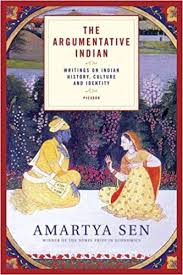 I speak English. But I speak a certain type of American English. I’m brown. But my culture is American.
I speak English. But I speak a certain type of American English. I’m brown. But my culture is American.
On a blog like this, these structural problems give rise to particular issues. I actually saw it on the old Sepia Mutiny blog first. Indian English is a distinct dialect not only in accent and lexicon but also in idiosyncrasies in its idioms.
When we speak and write to the audience of this weblog, Indian and American (or British) audiences may actually infer different implications of the things we say. The easiest way to illustrate this is the use of the word “secularist.” The word is rich and pregnant with connotation and association for the Indian audience, but not so much for the American one, where it denotes something clear, distinct, and delimited. For the Indian audience, I avoid using the word “secularist” and “secular”, because I don’t want to get involved in a stupid argument that I have a marginal investment in.
I really can’t fix this issue of semiotics and linguistics. Sometimes confusions will ensue, and I will point out the reason.
But, there are two problems with some Indian commenters of this weblog that I want to highlight:
- Throwing up a “wall of text” in lieu of a concise argument.
- Obvious bad-faith posturing.
On my posts, if you engage in this behavior I may just delete your comments without warning. Those of you who have engaged in #2, I know exactly who you are, and I may delete your comments without warning too. Talking with a friend who is Indian but not raised in the United States, it could simply be that this behavior is taken for granted as normal by Indians (Hindu nationalist repurposing of SJW talking points without any shame suggests to me that this may be the case). That’s fine. But not on my posts.
I am not going to manage the posts of others. So perhaps my posts will become deserts of commentary. I am at peace with that.
BrownCast Podcast episode 15: conversations with a Carvaka
Another BP Podcast is up. You can listen on Libsyn, iTunes and Stitcher. Probably the easiest way to keep up the podcast since we don’t have a regular schedule is to subscribe at one of the links above. You can also support the podcast as a patron (the primary benefit now is that you get the podcasts considerably earlier than everyone else…this podcast has been up for nearly a week on the patron page).
As far as show notes go, just check out Kushal Mehra’s YouTube page.
Marvin Gaye: Inner City Blues
Was trying to add the saved video as an comment.
What can I say, typical Shudra/Dalit behavior on my part.
We are all Aryans now
 Last year I contributed a chapter to a book soon to be published in India, Which of Us are Aryans? In answer to the question, the straightforward answer is that almost all of us are Aryans. That is, the thin but persistent layer of Indo-Aryan (“steppe”) ancestry is present across the subcontinent. In higher fractions among Brahmins and Kshatriyas than in Dalits, in the northwest than the southeast, and among Indo-European speakers than Dravidians. But this ancestral component and its cultural correlates are found across southern Asia.
Last year I contributed a chapter to a book soon to be published in India, Which of Us are Aryans? In answer to the question, the straightforward answer is that almost all of us are Aryans. That is, the thin but persistent layer of Indo-Aryan (“steppe”) ancestry is present across the subcontinent. In higher fractions among Brahmins and Kshatriyas than in Dalits, in the northwest than the southeast, and among Indo-European speakers than Dravidians. But this ancestral component and its cultural correlates are found across southern Asia.
Secondarily, there has been some discussion about the negative valence in the West about the term “Aryans.” In particular, its “cultural appropriation” by German Nazis by way of Theosophy and various spiritual and quasi-spiritual movements in the early 20th century.
As an American to see the word “Aryan” bandied about like this is strange and a bit uncomfortable. But there are now more than 1 billion Indians, so I don’t believe we in the West are a position dictate in terms of the lexicon that we borrowed from Indians in the first place, often without clear attribution (most Americans and Europeans would be surprised that “Aryan” is an Indian and Iranian term).
BrownCast Podcast episode 14: conversation with a Hindu nationalist
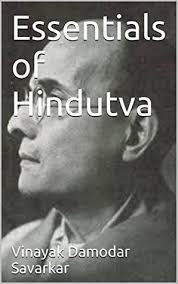 Another BP Podcast is up. You can listen on Libsyn, iTunes and Stitcher. Probably the easiest way to keep up the podcast since we don’t have a regular schedule is to subscribe at one of the links above. You can also support the podcast as a patron (the primary benefit now is that you get the podcasts considerably earlier than everyone else…this podcast has been up for nearly a week on the patron page).
Another BP Podcast is up. You can listen on Libsyn, iTunes and Stitcher. Probably the easiest way to keep up the podcast since we don’t have a regular schedule is to subscribe at one of the links above. You can also support the podcast as a patron (the primary benefit now is that you get the podcasts considerably earlier than everyone else…this podcast has been up for nearly a week on the patron page).
I asked our interlocuter for some reading material. Here’s what he suggested:
– The Sarva-Darsana-Samgraha Review of the Different Systems of Hindu Philosophy
Obviously, there wasn’t going to be any resolution after an hour and a half long conversation. Instead, questions and confusions were clarified. Disagreements were aired. That being said, I did leave the discussion crystal clear about what Pinaka opposed, rather than what he supported. At least in the specifics. I would hold that one reason that this is so is that it is easier to say what Hindu culture and religion is not more than what it is.
The ghost of empire and the origin of all repression
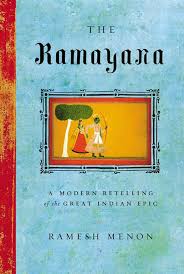 The New York Times published an op-ed, How British Feminism Became Anti-Trans, where India implicitly makes a showing:
The New York Times published an op-ed, How British Feminism Became Anti-Trans, where India implicitly makes a showing:
It’s also worth noting that the obsession with supposed “biological realities” of people like Ms. Parker are part of a long tradition of British feminism interacting with colonialism and empire. Imperial Britain imposed policies to enforce heterosexuality and the gender binary, while simultaneously constructing the racial “other” as not only fundamentally different, but freighted with sexual menace; from there, it’s not a big leap to see sexual menace in any sort of “other,” and “biological realities” as essential and immutable….
These views are very common on the cultural Left. When progressive social activists make these assertions, and I argue that they are factually wrong, I’ve often encounter surprise and annoyance. There are two things I suspect going on here:
– These people are not genuine propagandists, they actually believe their own fictions. Faced with facts that are novel to them don’t know how to react. They live in a factual bubble where it is taken for granted that the idea of binary gender as a dominant paradigm was introduced by Westerners to South Asians, whose own conceptions were fluid, open, and tolerant.
– The facts of the history of non-Western cultures are fundamentally irrelevant because they exist only to support narratives relevant within Western cultures. Those narratives and the trajectory of Western culture is their true passion. Their fundamental Eurocentrism means that falsehood about non-Western cultures is not particularly of great concern. That is not “their history.” Minor details to be ignored and brushed aside.
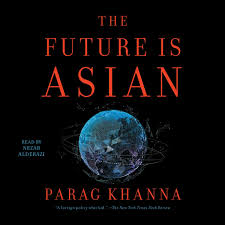 Gibbon famously asserted that the Pope, and implicitly the Roman Catholic Church, was the “ghost of the Roman Empire.” A living, breathing, vestige of an institution and society long gone. Much of modern Western Left social progressivism, informed by critical theory and post-colonialism, is a ghost of 19th and 20th-century empire. It is the warped inversion and reflection of Western chauvinism and populism.
Gibbon famously asserted that the Pope, and implicitly the Roman Catholic Church, was the “ghost of the Roman Empire.” A living, breathing, vestige of an institution and society long gone. Much of modern Western Left social progressivism, informed by critical theory and post-colonialism, is a ghost of 19th and 20th-century empire. It is the warped inversion and reflection of Western chauvinism and populism.
It is highly peculiar to me that on the precipice of the 21st Asian age Western intellectuals bask and wallow in the reflected glory of Victorian-era empires as if they are determinative of all the goings on today. Part of this is surely due to the reality that intellectual currents are lagging indicators, and empires always persist longer in memory and self-regard than in reality. And part of it is the human needs for “noble savages” and “pure” Others against which their own sins may be measured and contrasted.
Our most popular podcasts & a personal dilemma
Our Genetics & India post just crossed a very major milestone (Omar’s China episode is closely racing it) and 13 episodes on I thought it would be good to share our most downloaded podcasts. Our podcast listening figures are many multiples of the readership of this blog so kudos to Razib for suggesting it and to Omar & myself for hitching along for the ride.
Omar’s most recent podcast on India Military History has only just been released this morning and is already very well-downloaded. It’s interesting to see just how interested our listeners are in China, Islam and the military; not so much in Indian specific topics, art or culture. I guess people are most interested in the near exotic rather than the familiar.
I believe we have a podcast on the Patron page and another one is expected to be done tomorrow (I can only join in because the time zones align being back in Chennai again- for work this time).
I’m finalising a few of my own podcasts; I’m reworking the Dravidian one into a Deccan languages one. I’m also looking for a very well versed economist to speak with on the Indian economy both in a global and South Asian context.
I’m still very much a technophobe; my after dinner electronic ban has led to an efflorescence of intellectual thought (if I say so myself). I’m handwriting my novel & then interspersing my journal entries as a break between writing blocks.
I tried handwriting BP posts but they end up so familiar & intime that I have to post them to my locked private blog; it’s astonishing just how difficult it is to be trollish/opinionated about topics by hand, it just seems absurd on the written word as opposed to a computer.
I’ve discovered the medium of technology profoundly influences the writing style (twitter and its propensity for flame wars is a good example). Knowing that I have a ready audience with only the click of the button I will write for the reader than for myself. However the handwritten style, where the reader is a distant stranger, lends to a profound intimacy.
I’m very proud of my prolific output even though my handwritten notes rapidly degenerate into hieroglyphics if not typed out and it will require constant editing (not surprisingly I tend to be of the James Joyce style, a stream of consciousness).
In many ways I remind myself of a D-lister who have made their career playing Marvel characters is now trying to be taken seriously as an actor.
By masalafying BP and spicing up the comment threads, I’ve trolled my way to the top in the niche world of Brown Pundity. Now in my own search for authenticity I find myself compelled to play a role all of my own making. An existential crisis worthy of a good novel..
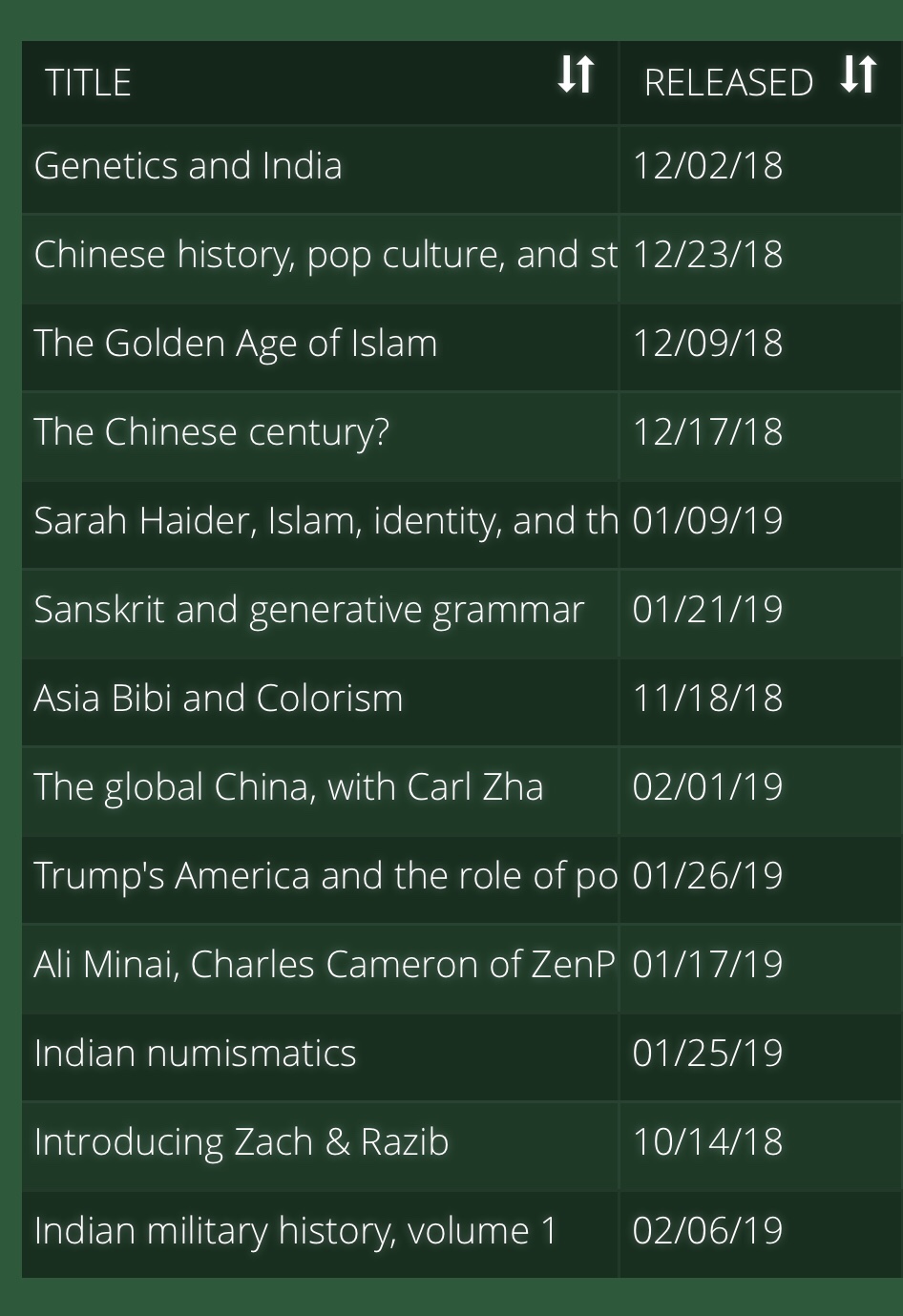
Review: Directorate S
Review from Major Amin: Directorate S –The CIA and Americas Secret Wars in Afghanistan and Pakistan, 2001-2016-Steve Coll -Allen Lane- Penguin Books-2018-ISBN-978-1-846-14660-2 ISBN-13: 978-1987659184 ISBN-10: 198765918X

A leading US-Israeli Intelligence analyst and operator recently summed up pathetic state of US intelligence operators in Pakistan as following:–
“ They are afraid of their own shadows”
As great powers decline , their quality of strategic judgement and decision making and their operational effectiveness also markedly declines.
Steve Coll’s voluminous and bulky book reconfirms this fact .
The first defect of this book is that it does not contain a single relevant map connected to the subject i.e Directorate S.
On page 12 the writer repeats a false and unsubstantiated claim that CIA pilots had to fly Russian MI series helicopters for Northern Alliance , whereas in reality Afghanistan never had any shortage of Afghan helicopter pilots.
On page 14 the author confirms his absolute lack of knowledge of geography when he fallaciously claims that Panjsher valley slices north towards Tajikistan , whereas in reality Panjsher valley inclines towards Chitral in Pakistan towards the Northeast , ending at Anjuman Pass.
The authors analysis is a clear testament to the fallacious assessments of US policy makers about Afghanistan like on page-17 he discusses Al Qaeda and US policy makers obsession with Al Qaeda.
As a matter of fact Al Qaeda was never the real player in Afghanistan all along . It was a puny group with limited strategic ability. The real players in Afghanistan all along were Taliban supported by Directorate S of the ISI.
This basic US perceptual error repeatedly appears in Steve Colls voluminous narrative and Steve Coll himself is quite confused about it.
Steve Colls factually flawed statements like page-17 where he states “Recalling the miserable fates of Imperial Britain” while referring to Britain”s Afghan wars. Why Coll has to make such baseless statements is perplexing. As a matter of fact all three Afghan wars were a strategic success , the first being waged by a British private company. All three Afghan wars made British strategic position in India and West Asia stronger and created a more stable Afghanistan.I guess it is fashionable in western authors to make such statements about what a terrible place Afghanistan was and is . Continue reading Review: Directorate S